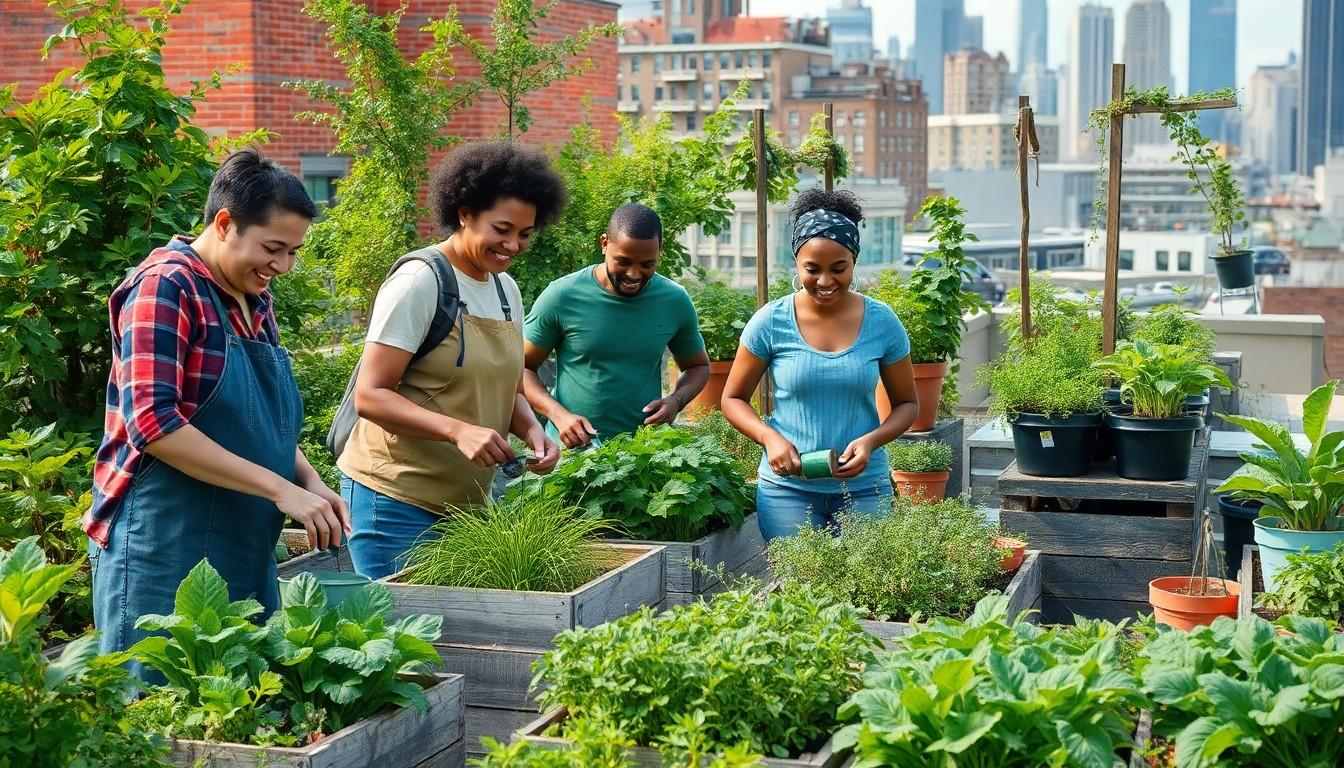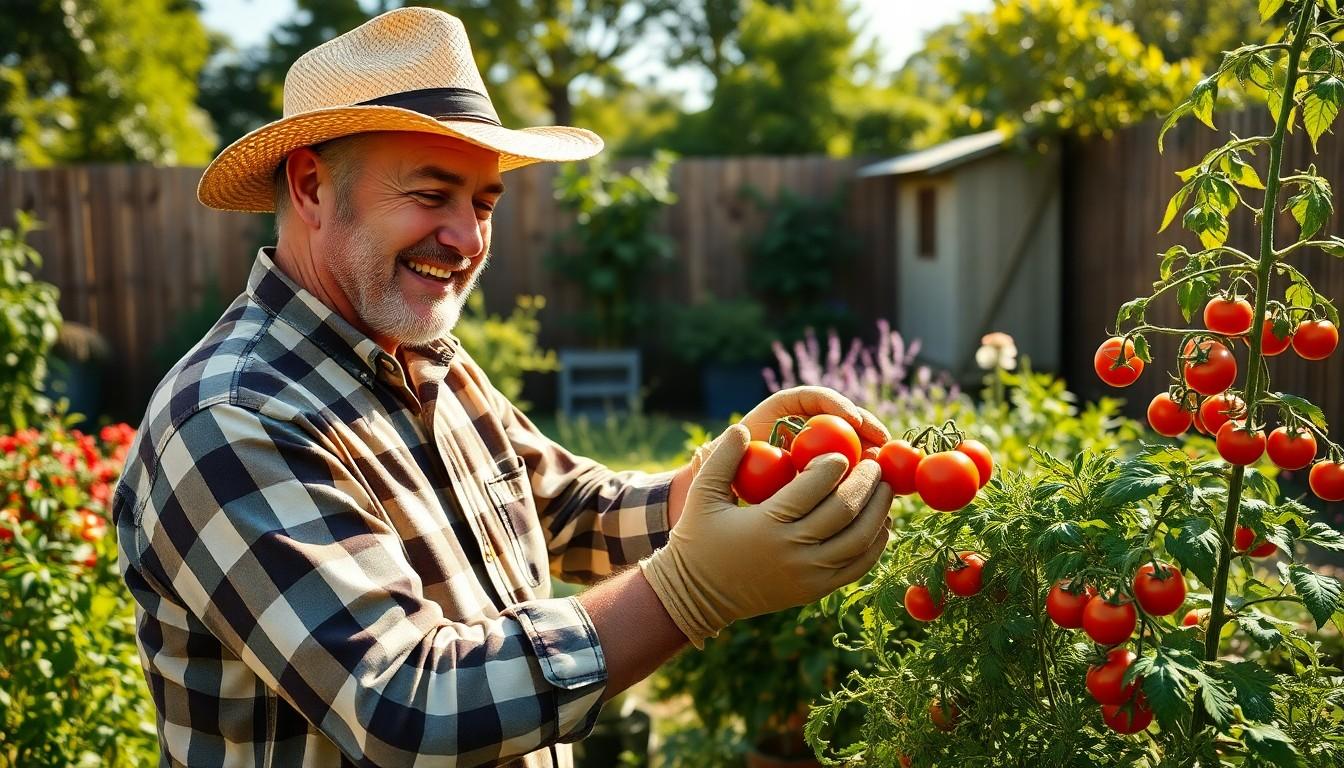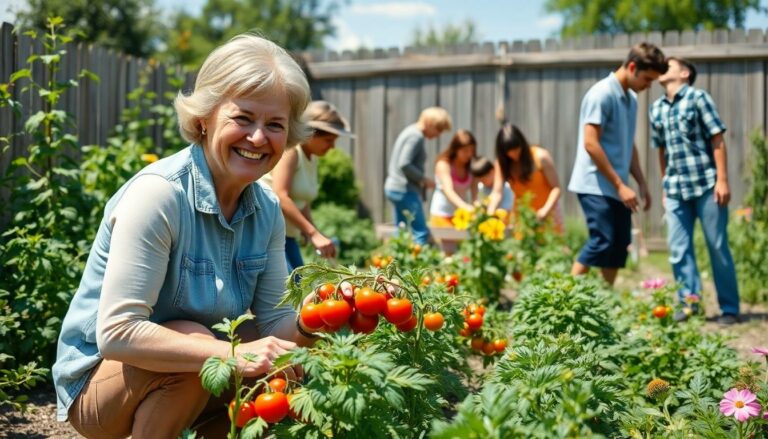Imagine strolling through your backyard, plucking ripe tomatoes and fragrant herbs while the grocery store remains a distant memory. Food self-sufficiency isn’t just a trendy buzzword; it’s a lifestyle that promises delicious homegrown meals and a dash of independence. In a world where the only thing more unpredictable than the weather is the grocery aisle, growing your own food can feel like a superhero power.
Food Self Sufficiency
Food self-sufficiency involves producing one’s own food to meet personal needs. This practice fosters independence, resilience, and a direct connection to food sources.
Definition and Importance
Food self-sufficiency refers to the ability of individuals or communities to grow and consume their own food. The importance of this practice lies in its capacity to enhance food security and reduce reliance on external sources. In an ever-changing climate, cultivating food promotes adaptability. With rising food prices, producing it at home offers notable financial relief. Furthermore, this approach encourages sustainable practices, such as organic gardening and permaculture. As people grow their own produce, they can enjoy fresher, healthier options. Improved nutrition and reduced pesticide consumption follow, contributing to better overall health for individuals and communities.
Benefits for Communities
Communities benefit from food self-sufficiency in multiple ways. Strengthening local economies emerges as one key advantage, as residents spend money on local supplies rather than imported goods. Creating community gardens fosters social bonds among residents, encouraging cooperation and teamwork. Sharing knowledge about growing techniques enhances the collective skill set of community members. Food self-sufficiency leads to greater food security, reducing vulnerability during supply chain disruptions. Healthier produce fills local plates, resulting in improved community well-being. By investing in local food systems, communities cultivate resilience and bridge gaps between diverse populations.
Strategies for Achieving Food Self Sufficiency

Food self-sufficiency encompasses various innovative strategies that empower individuals and communities to grow their own food. Two effective approaches include urban agriculture initiatives and community supported agriculture programs.
Urban Agriculture Initiatives
Urban agriculture initiatives play a vital role in promoting food self-sufficiency, particularly in densely populated areas. These programs transform vacant lots and rooftops into productive gardens, enabling residents to cultivate fresh produce. Cities across the US witness this movement, where community members come together to utilize local resources effectively. Urban gardening not only increases access to food but also fosters a sense of community. Many people engage in workshops, enhancing skills related to gardening and sustainable practices. Cities implementing these initiatives see improved nutrition and reduced food deserts, leading to healthier urban environments.
Community Supported Agriculture (CSA)
Community supported agriculture (CSA) models facilitate a direct connection between consumers and local farmers. Members of a CSA purchase shares of the harvest, ensuring farmers receive compensation upfront for their produce. This arrangement supports local agriculture, encouraging sustainable food production. Many CSAs offer seasonal deliveries, allowing families to receive fresh, organic vegetables directly at their doorstep. Participants benefit from knowing their food sources and often partake in farm events, deepening their understanding of agricultural practices. The economic sustainability derived from CSAs strengthens local communities and fosters resilience against fluctuating food prices.
Challenges to Food Self Sufficiency
Several challenges arise in the pursuit of food self-sufficiency. Addressing these issues proves essential for individuals and communities striving for independence in their food production.
Economic Barriers
Economic barriers significantly hinder the achievement of food self-sufficiency. High start-up costs for gardening supplies, equipment, and land make initial investments difficult for many. Limited access to financial resources or affordable land further complicates efforts. Additionally, the costs associated with organic farming practices can deter individuals from pursuing sustainable methods. Local policies may favor large agricultural enterprises, leaving small-scale producers at a disadvantage. Overall, these economic factors restrict the ability of individuals and families to grow their own food effectively.
Climate Change Impact
Climate change impacts food self-sufficiency through unpredictable weather patterns and environmental stressors. Erratic rainfall, prolonged droughts, and increased pest infestations threaten crop yields. Gardeners often face challenges such as soil degradation and shifting growing seasons. Communities relying on traditional farming methods may struggle to adapt quickly to these changes. Consequently, the drive for self-sufficient food production demands resilience and innovation in response to the evolving climate landscape. Addressing these climatic challenges remains crucial for ensuring sustainable local food systems.
Case Studies of Successful Food Self Sufficiency
Successful food self-sufficiency initiatives illustrate the potential for individuals and communities to thrive. These examples demonstrate creativity and resilience.
Local Initiatives
Community gardens in urban areas stand out as thriving local initiatives. These spaces enable individuals to collaborate, share knowledge, and cultivate diverse crops. For instance, Detroit’s urban agriculture movement transformed vacant lots into productive gardens, enhancing access to fresh produce. Moreover, local farmers’ markets often connect consumers directly to growers, fostering sustainable practices and reducing transportation emissions. By promoting education through workshops, these initiatives empower community members, encouraging them to embrace home gardening and sustainable farming methods.
Government Policies
Government policies play a critical role in fostering food self-sufficiency. Various local and state governments enact incentives for urban agriculture, such as grants and tax breaks for agricultural startups. For example, initiatives that support community-supported agriculture (CSA) programs foster strong connections between consumers and farmers. Policymakers prioritize food security in urban planning, emphasizing the need for accessible public spaces for gardening. Additionally, land-use policies that promote eco-friendly practices significantly contribute to sustainable food systems. These government efforts establish a framework that enables future food independence.
Community and Shared Purpose
Embracing food self-sufficiency offers a pathway to independence and resilience in today’s unpredictable landscape. By growing their own food, individuals and communities can enhance their food security while fostering connections to the land and each other. The benefits extend beyond personal satisfaction to include strengthened local economies and improved nutrition.
As challenges like climate change and rising food prices persist, innovative solutions and community initiatives play a crucial role in overcoming barriers. By supporting urban agriculture and local farming practices, everyone can contribute to a sustainable future. The journey toward food self-sufficiency is not just about growing food; it’s about cultivating a sense of community and shared purpose.




